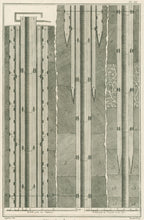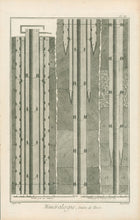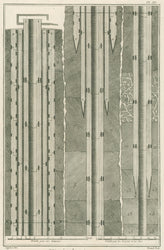Louis-Jacques Goussier. "Minéralogie, Sonde de Terre." Pl. III.
From Encyclopédie ou Dictionnaire Raisonné des Sciences, des Arts et des Métiers, par une Société des Gens de Lettres, Denis Diderot. 17 volumes. Paris: Briasson, David l’ainé, Le Breton, Durand, 1751-1765. 12 3/4 x 8 1/4. Engraving by Benard. Very good condition.
Originally proposed as a French translation of the Cyclopædia published in 1716 by Ephraim Chambers, Diderot’s Encyclopédie blossomed into 17 volumes which crystallize Enlightenment thinking and the scientific achievements of the period. In 1745, the project began as the brain-child of the noted French publisher Andre-François Le Breton, who succeeded in convincing three of his colleagues, Claude Briasson, Michel-Antoine David and Laurent Durand to join him in publishing this monumental work.
Having recently finished the renowned Dictionnaire de Medicine, Denis Diderot undertook the project and enlisted the assistance of his famous friend Jean d’Alembert. As each volume appeared, it caused a sensation throughout Europe, and especially throughout the traditionally conservative French aristocracy and clergy. In fact, in 1759 the seven published volumes were banned by the French Attorney General and condemned by the Pope.
The Encyclopédie contains many fascinating prints depicting the ideas, methods, and apparatus which became the pinnacle landmarks of the artistic, scientific and technological advancements of the Age of Enlightenment. As an historic document of the mid-18th century, the Encyclopédie represents all that was new, wondrous, rational and scientific; all that was the Age of Enlightenment.





